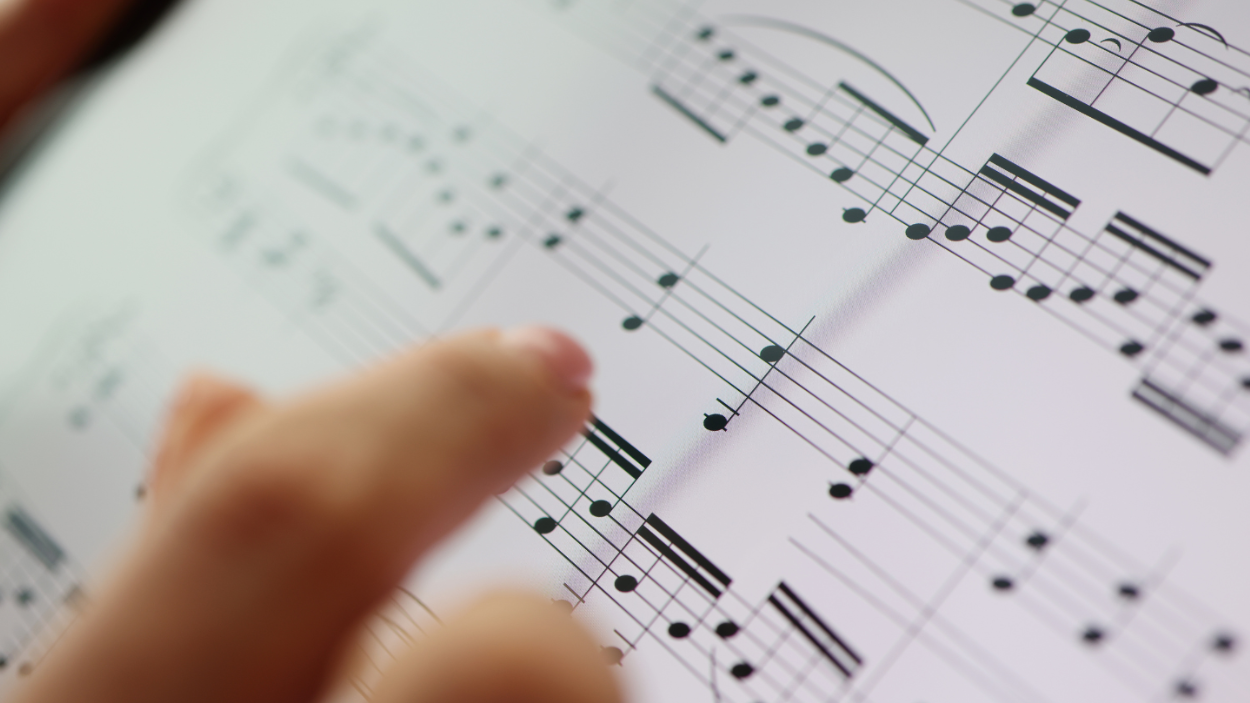An outstanding blend and an outstanding balance are always a part of an outstanding performance.
An outstanding blend and an outstanding balance are always a part of an outstanding performance. Yet, these musical requirements are a singular challenge for each performer and each conductor. The composer can expect to hear an accurate interpretation of his composition. This interpretation is always limited to abilities, decisions, and expectations of performers and conductors.
We hear a blend from the string sections of European orchestras that is very different from the blend in the orchestras of North America. The bands of Austria are different in their balance from the balance that is heard in England or Switzerland. These sounds are by tradition and by decisions of the conductors. Very few methods books explain blend. Nor do they explain balance beyond that required for chords and climaxes. We are always “marked down” for a lack of contrast in our performances.
What sound of ensemble do you want from your group?
I admit the above two paragraphs are ambiguous. Individual answers will result from our rehearsals and concerts. Listen to many concerts and recordings. What sound of ensemble do you want from your group? I can still remember the day in 1935 when I decided what my group needed to sound like to earn a top rating. I decided to make phrases as long as possible. There were intonation problems when performers played so loudly that they could not hear their pitch as it related to the pitch of the ensemble. Good tones were always most important. A part of the daily warm-up was for tonal improvement. Much score study was done to decide the composer’s wishes and how the band could do the interpretation as demanded by the conductor. Ear tests had given me the confidence that I could quickly hear tones that were not in unison and tones that were not alike. The main problem was to match the mental requirements to the ability of the performing group.
Answers to the problem were gained by attending clinics, listening, reading, bull sessions, and classes from outstanding instructors. Most band directors were brass students. This led to the rich sounds from a big, warm, woodwind section. So the first demands of the score were for tutti blend.
Should the tutti effect have a brass feeling with support of woodwinds, or should the tutti sound be from woodwinds only with a touch of brass support? We get those “gray” sounds with tuttis that are not accurate. A “buzz” in the forte balance often comes from the wide reed instruments; tenor sax, baritone sax, and bass clarinet. The balance may be unbalanced because of too much power from the first chair players. It is a shame that a group’s best students can cause a strident feeling in fortissimos. The orchestra gets its rich tone from a depth of string tone that is similar in all sections. The winds are used mainly for solo or duet passages and wind chords are saved for climaxes with brass power. A definitive richness is more difficult to obtain in the band. One part may be in several sections. This calls for a blend of rich qualities and a correction of intonation. For example: tune the clarinet F# to the alto saxophone C# to the euphonium high E and to the bassoon E.
Learn to hear and feel the core and quality of the good sound.
Obtain a blend and balance in unisons. The range of the clarinet is 53 notes. Put a “dot” in the center of the reed and 1/2 inch from the tip. Feel that every note, high or low, comes from this dot. Work from p–mf–f–mf–p for blend and balance within the section. Copy all tones to the student with the best tone. Breathe deeply, keep the throat open and use damp air. Fifth line F is a good long tone to use for clarinets. Somewhere along the crescendo a good sound will be heard. Too little sound will be thin or soggy and too much sound will be shrill. Learn to hear and feel the core and quality of the good sound.
Now work alto saxes on their F. Aim for a French horn sound from the altos. And don’t forget that alto saxes may be used to strengthen the second or third clarinet part, the French horn or the euphonium section. These sounds must have a blend. Don’t hear individuals. Think of a choir with fine, open vowels. Oboes and bassoons are solo or duet instruments. A strong oboe on the first clarinet line will add a nasal balance to the tonal effect. Do a good third space C with the alto saxophones. Now go upward slowly to D and E, but keep blowing straight downward as if the students are still playing the third space C. This approach will eliminate the sharpness that is heard as the saxophone goes from C to D and E, or from high F to G and A. Have the clarinets play third space C, then D and E. Then have cornets match this intonation as they go through their C, D and E. Need I say more? Keep checking trombones on Bb, A and G and then from Bb to C and D. It’s too tempting for trombones to cheat on these easy notes.
Eliminate poor sounds.
Eliminate poor sounds. Many directors do not hear their group outside of the rehearsal hall. Move into the auditorium or gymnasium and hear what the audience will hear. Study and plan rehearsals to cover everything from a musical and technical standpoint. The style, character, and tradition of the music set the conductor’s interpretation. Is a Baroque number patterned after the orchestra or after the organ? Wind instruments cannot do a pizzicato style. Romantic and Classical styles need much warmth and no shrillness from woodwinds. Avant-Garde and the rhythmic cliche music need a transparency that is not heard in the styles of the 19th century.
It was exciting to hear Carleton Stewart do his clinic on the pyramid band sound, and Hugh McMillen was a pioneer in using the depth of sound from woodwinds via multiple bass clarinets. Their bands had the richness of a great organ. Early town bands were pioneer wind ensembles. Each part was covered, but each section was small. This band’s concert in the gazebo was a beautiful technical display of marches, waltzes, romantic overtures (with obligatos) and solos. It was the great college bands that set the pattern for great school bands. Interpretations had a forward flow that was governed by the phrase and not by the bar lines. Climaxes were not redundant just because the score was marked by a double forte. Climaxes were a part of the composer’s style of interpretation. And a beautiful blend and balance then makes the performance special. The group will have a polish and confidence to gain respect from audiences.






